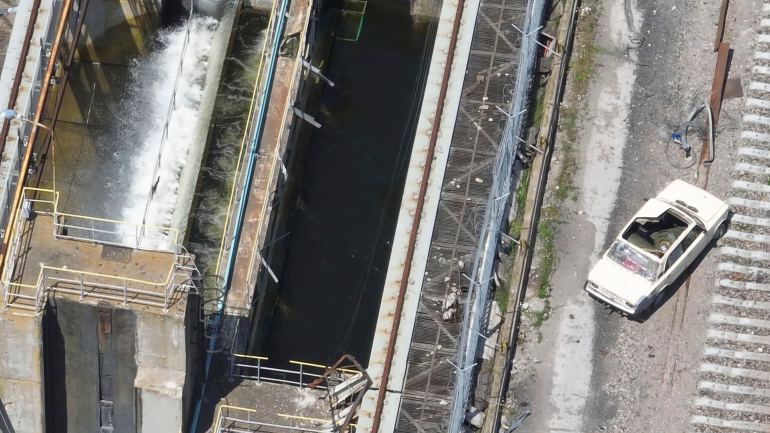Moscow has rejected United Nations’ gives to assist folks in Russian-occupied areas affected by flooding from the collapsed Nova Kakhovka Dam.
The dam was breached on June 6, unleashing a wave of water from the Dnipro River on communities throughout southern Ukraine together with Russian-occupied elements of the Kherson area.
The floods destroyed houses and farmland, pressured the evacuation of 1000’s, contaminated provides of consuming water and sparked fears of environmental catastrophe.
The UN urged Russia to behave in accordance with its obligations beneath worldwide humanitarian regulation.
“The UN will proceed to do all it may well to succeed in all folks – together with these struggling on account of the current dam destruction – who urgently want life-saving help, regardless of the place they’re,” Denise Brown, UN humanitarian coordinator for Ukraine, stated in an announcement on Sunday.
“Support can’t be denied to individuals who want it.”
The loss of life toll from the catastrophe has risen to 52, with Russian officers saying 35 folks had died in areas beneath its management and Ukraine’s inside ministry saying 17 had died and 31 had been lacking. Greater than 11,000 folks have been evacuated on each side.
‘Means, motive, alternative’
Ukraine accuses Russia of blowing up the Soviet-era dam, which has been beneath Russian management because the early days of its full-scale invasion in 2022.
A workforce of worldwide authorized specialists aiding Ukraine’s prosecutors of their investigation stated it was “extremely probably” the dam’s collapse was brought on by explosives planted by the Russians.

The Related Press information company reported Russia had “the means, motive and alternative” to destroy the dam, citing drone photographs and data from navy and political sources within the space.
Russia has accused Ukraine of inflicting the dam breach however the numerous Russian allegations, together with that it was hit by a missile, fail to account for a blast so sturdy that it registered on seismic displays within the area.
The large flooding that adopted the explosion got here as Ukraine was making ready to launch its counteroffensive and the Dnipro River varieties the entrance line.
“It’s an everyday observe, to mine (locations) earlier than a retreat,” Illia Zelinskyi, commander of Bugskiy Gard advised the AP, recounting how the rising waters quickly swamped their positions. “On this context, their actions had been to disrupt a few of our provide chains in addition to complicate a crossing of the Dnieper [Dnipro] for us.”
Zelinskyi confirmed to the information company that the explosion appeared to return from the world the place the dam’s machine room was positioned. He and a United States official acquainted with the intelligence each stated Russian forces had been there for a while. The US official spoke on situation of anonymity to debate delicate materials.
Images, taken from Ukrainian drone footage and obtained by the AP, additionally confirmed dozens of Russian troopers encamped on a financial institution of the Dnipro, trying relaxed as they walked forwards and backwards to the dam with no cowl.
A photograph dated Might 28 additionally confirmed a automotive parked on the dam, its roof reduce open to disclose monumental barrels, one with what seemed to be a land mine connected to the lid and a cable working in the direction of the Russian-held aspect of the river.
Though the automotive bomb itself wouldn’t have been sufficient to destroy the dam, it might have amplified any explosion originating within the machine room, a Ukrainian particular forces communications official advised the information company.
Nova Kakhovka was one in all a collection of dams constructed alongside the Dnipro River within the Soviet period designed to resist monumental drive.
The discharge of the now-contaminated water has already pressured the closure of in style Black Sea swimming seashores in Odesa and prohibited the consumption of fish and seafood from unidentified sources.
“The seashores of Odesa have been declared as unsuitable for swimming as a result of important deterioration of the water … and actual hazard to well being,” Odesa’s administration stated on the Telegram messaging app.
Water exams final week confirmed harmful ranges of salmonella and different “infectious brokers,” Ukrainian officers stated. Monitoring for cholera was additionally in place.
Ranges of poisonous substances in sea organisms and on the seabed are anticipated to worsen. There are additionally considerations about land mines washing up alongside the coast.